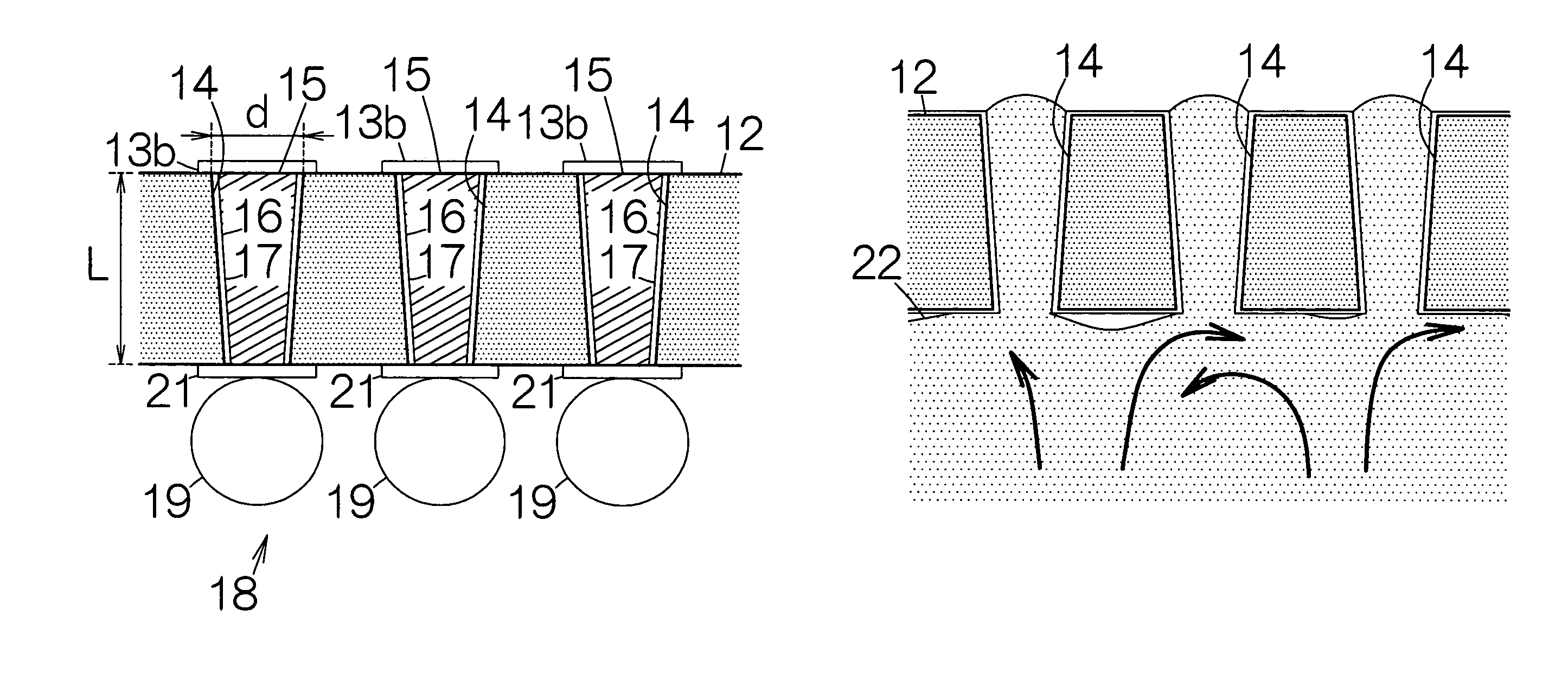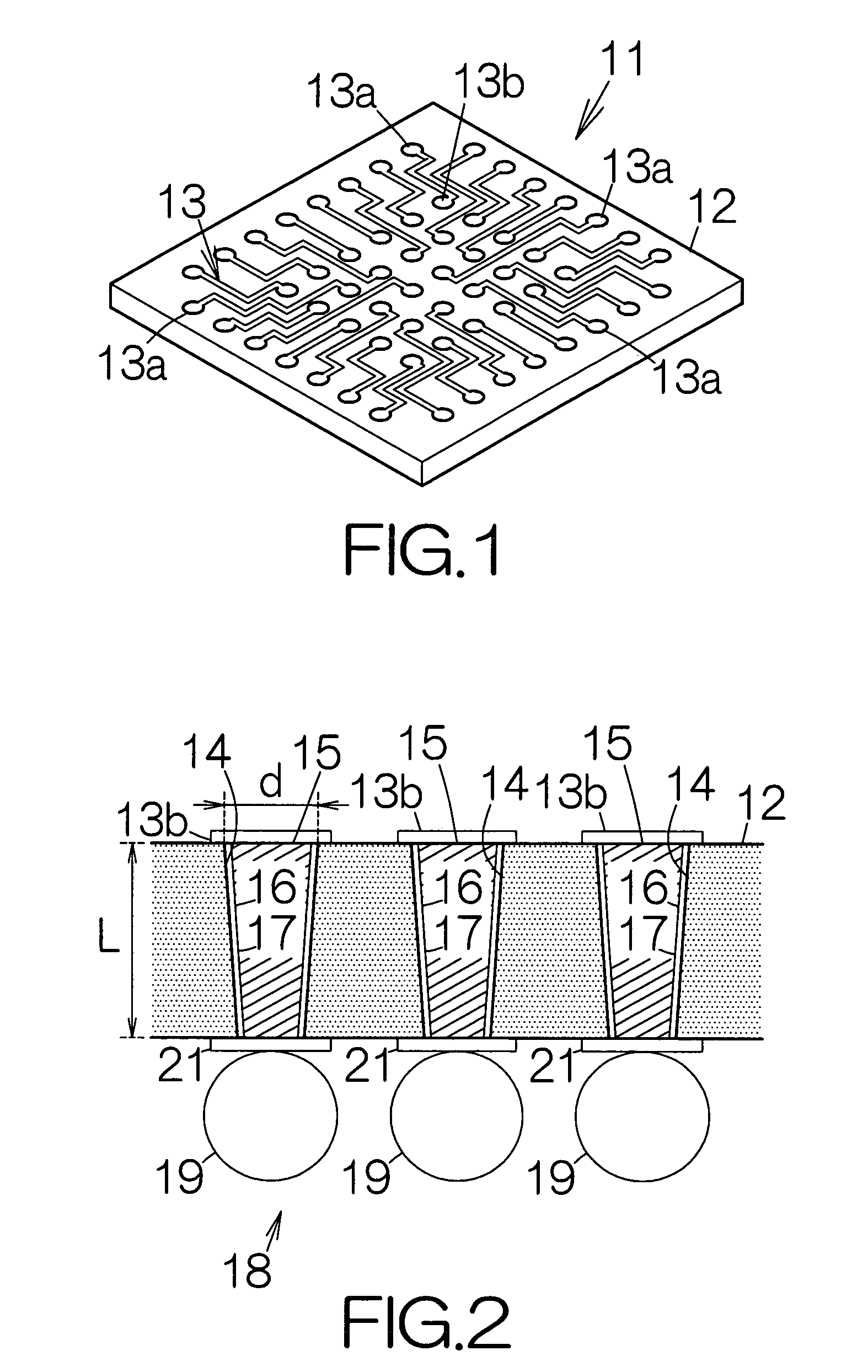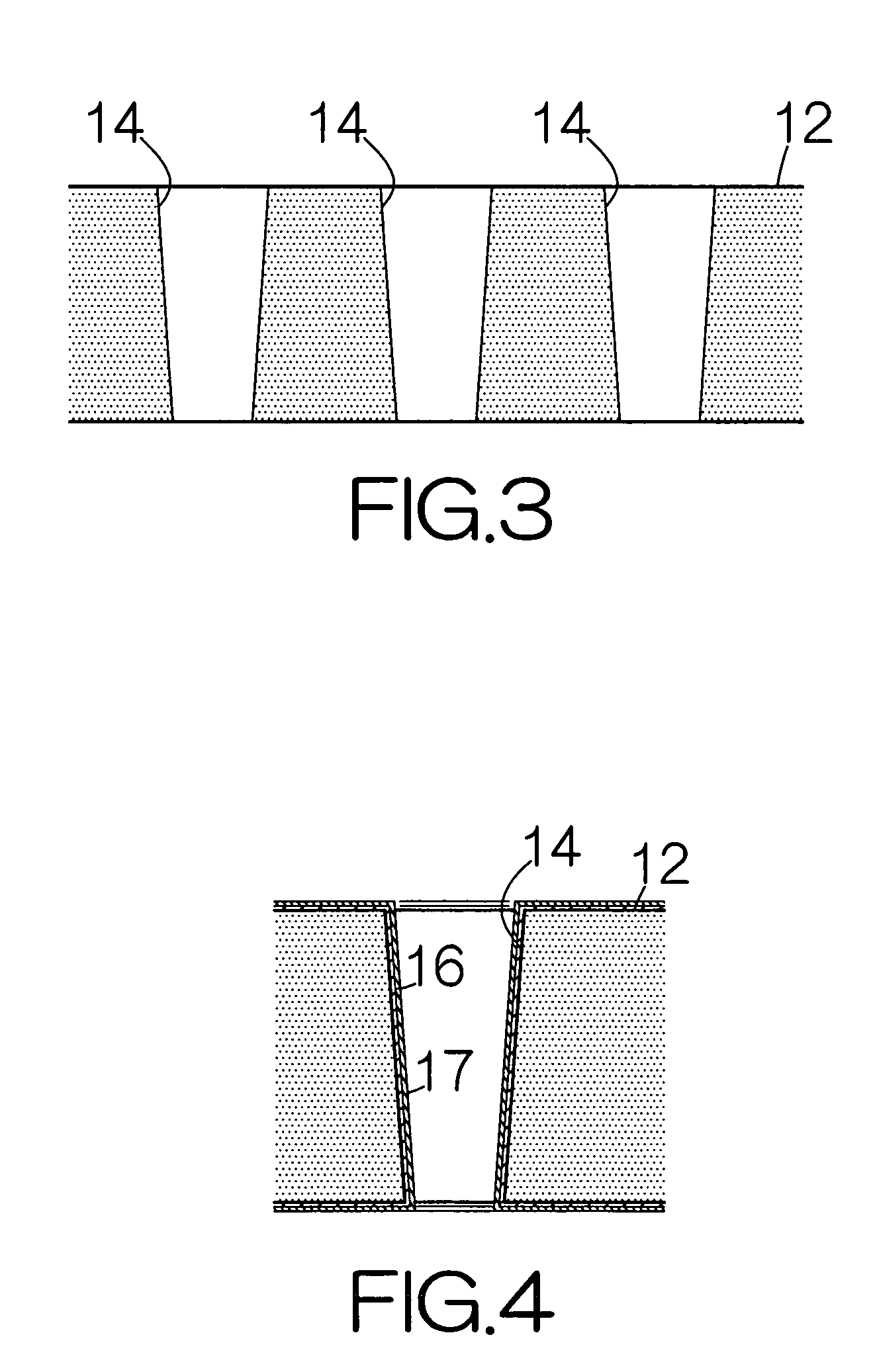Method of making zinc-aluminum alloy connection
a technology of zinc-aluminum alloy and connection method, which is applied in the field of products, can solve the problems of unintentional melting of solder alloy, shortening the operating time of filling the minute through hole, and low melting point of solder alloy
- Summary
- Abstract
- Description
- Claims
- Application Information
AI Technical Summary
Benefits of technology
Problems solved by technology
Method used
Image
Examples
Embodiment Construction
[0034]FIG. 1 schematically illustrates a package printed wiring board 11 according to a first embodiment of the present invention. The package printed wiring board 11 includes a glass substrate 12. A wiring pattern 13 is formed on the front surface of the glass substrate 12. The wiring pattern 13 is made of an electrically-conductive material such as aluminum or copper. Pads 13a, 13b are defined in the wiring pattern 13, for example. The pads 13a are located on the glass substrate 12 along the outer periphery of the glass substrate 12. The pads 13b are located at positions in an area inside the rows of the pads 13a. The package printed wiring board 11 may employ an inorganic substrate such as a silicon substrate or a ceramic substrate in place of the glass substrate 12. It should be noted that the glass substrate 12 may have any thickness. Here, the thickness of the glass substrate 12 is set at 400 μm approximately, for example.
[0035]As shown in FIG. 2, through holes 14 are formed i...
PUM
| Property | Measurement | Unit |
|---|---|---|
| aspect ratio | aaaaa | aaaaa |
| aspect ratio | aaaaa | aaaaa |
| temperature | aaaaa | aaaaa |
Abstract
Description
Claims
Application Information
 Login to View More
Login to View More - R&D
- Intellectual Property
- Life Sciences
- Materials
- Tech Scout
- Unparalleled Data Quality
- Higher Quality Content
- 60% Fewer Hallucinations
Browse by: Latest US Patents, China's latest patents, Technical Efficacy Thesaurus, Application Domain, Technology Topic, Popular Technical Reports.
© 2025 PatSnap. All rights reserved.Legal|Privacy policy|Modern Slavery Act Transparency Statement|Sitemap|About US| Contact US: help@patsnap.com



